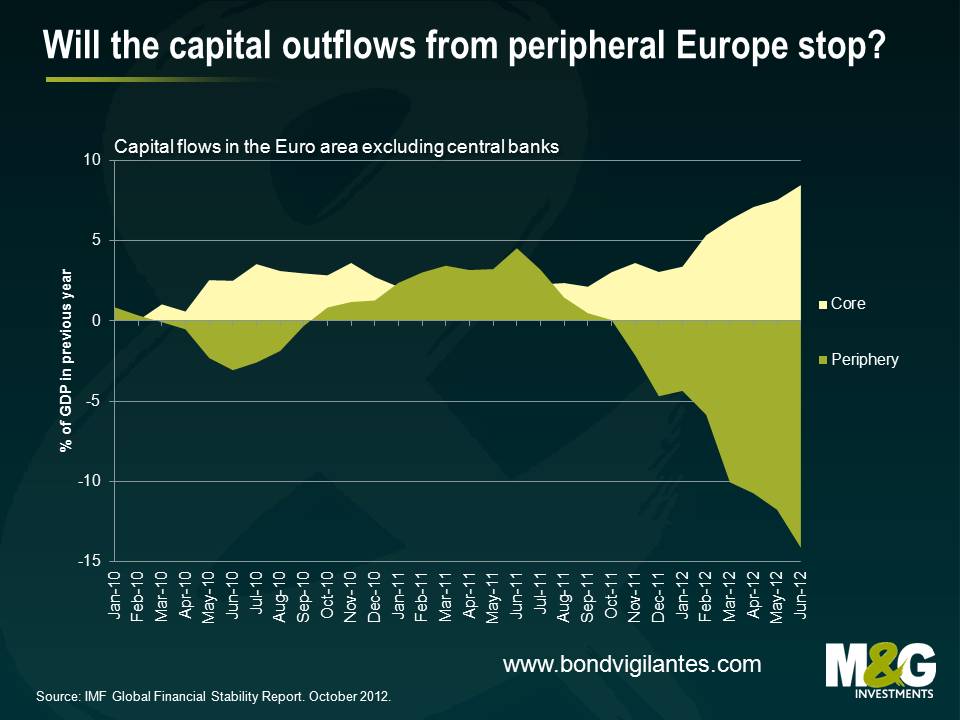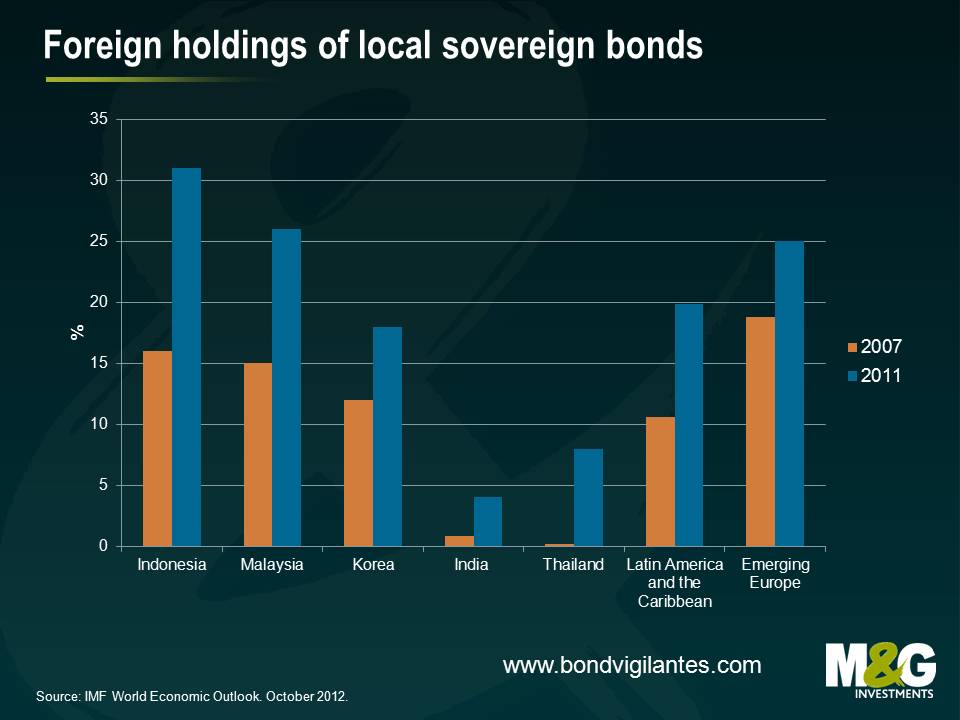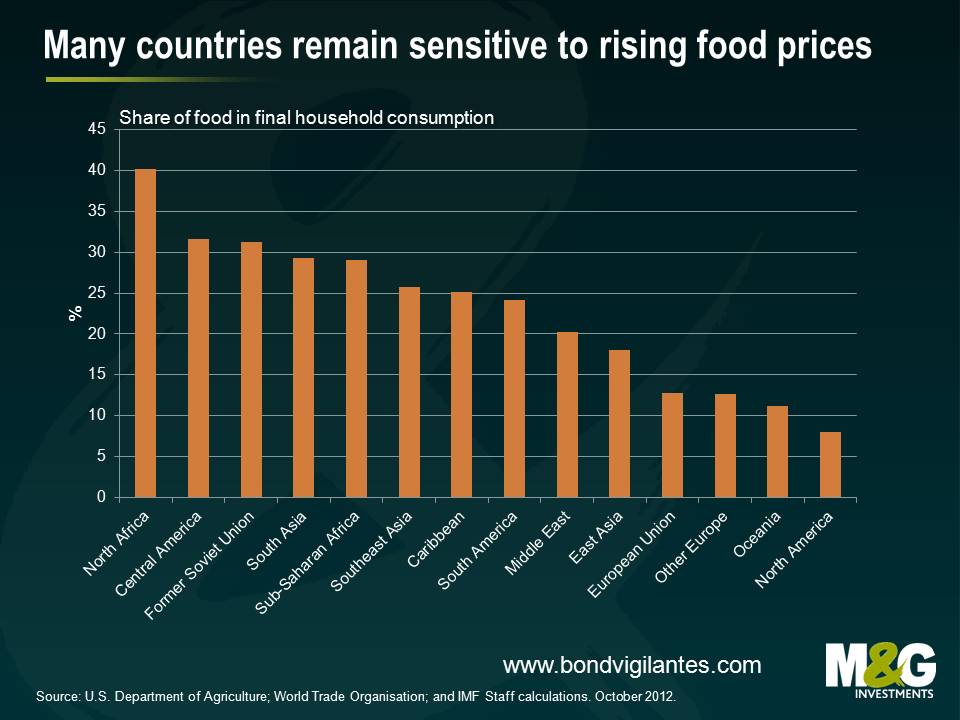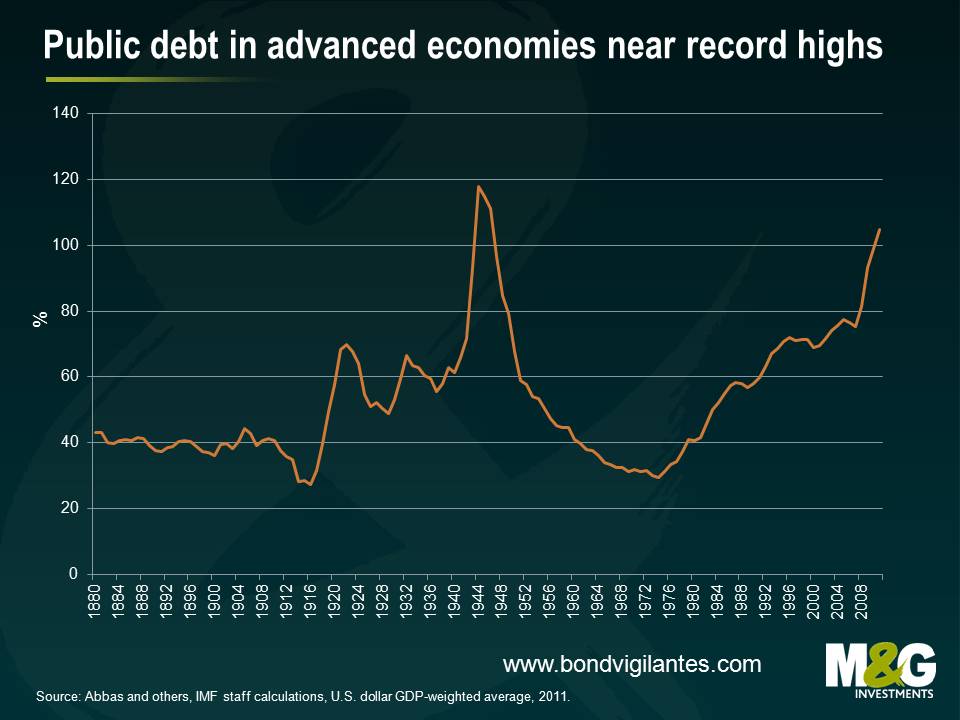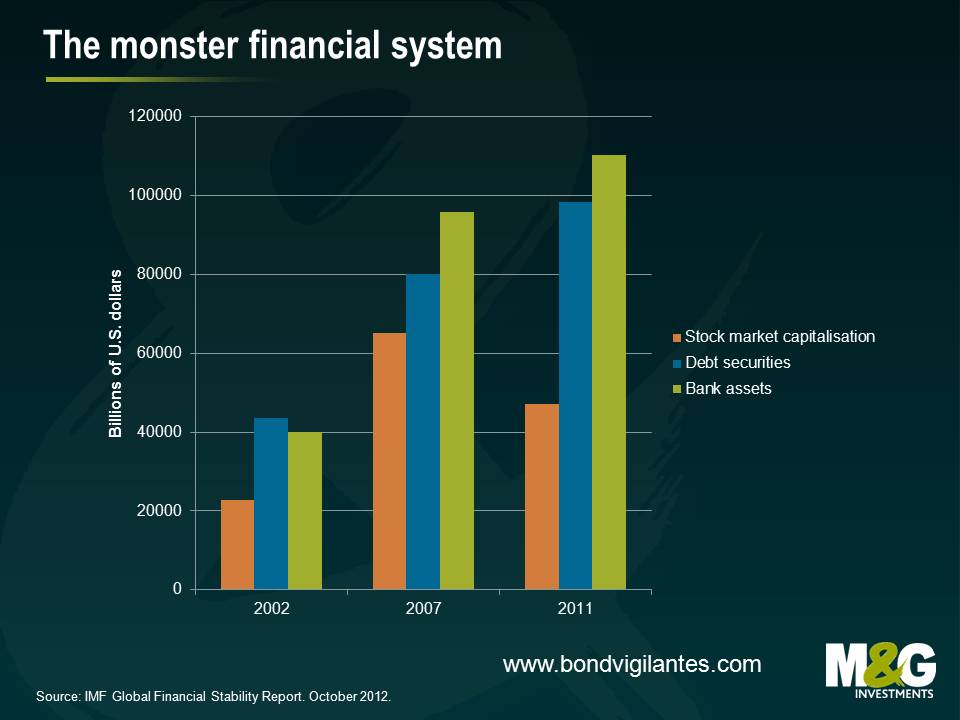Happy Halloween. Five scary charts. Boo!
In the true spirit of October 31, today we thought we would try our best to try and scare you. Five charts, each more scary than the last.
1. Capital fright
Uncertainty in Europe is having a significant impact on investor and consumer confidence. This is manifesting itself in a flight to quality for capital, which the below chart highlights rather well. Most economists agree that capital flight may destabilise financial markets, raise a country’s borrowing costs, reduces a country’s tax base, and can have major ramifications for the domestic banking system. If capital is the lifeblood of an economy, then the blood is draining out of the peripheral economies.
2. Ghostly foreign holdings of local sovereign bonds
On a related note, many emerging market countries have seen large capital inflows since 2007. We describe the percentage increase in foreign holdings of local sovereign bonds as ghostly. As quickly as the inflows appear, they can reverse again. This is a major risk in our opinion and is something we wrote about back in July.
3. Country dependence on trick or treats and food
It remains the case that for a substantial proportion of the world’s population, food remains the largest component of their consumption baskets. With global warming, rising populations, tightening supply dynamics and growing global demand, food prices and inflation will continue to have a large influence on the majority of us. How will governments and policymakers respond?
4. Growing public debt and zombie nations
Gross public debt as a percent of GDP in advanced economies is now near historical levels. There is significant debate about how policymakers will address the debt problems that many countries now face. If they don’t, they risk being cut off from bond markets, rendering them as zombies. Is it better to implement fiscal austerity, or try and stimulate growth through further policy stimulus? What about financial repression? Whatever the answer, there is going to be a lot of structural pain in order for many countries to become competitive again.
5. The global financial system is a monster
The global financial system can safely be classified as a monster. The global financial system is now valued at USD 255,855,541,100,000 (almost 256 trillion) in size. This is an increase of around 140% since 2002. To put this into context, the Milky Way galaxy is estimated to contain between 200-400 billion stars. As a per cent of GDP, the global financial system has grown to be worth around 367% of global GDP. Good luck to all the central bankers out there who are trying to tame the monster.
The value of investments will fluctuate, which will cause prices to fall as well as rise and you may not get back the original amount you invested. Past performance is not a guide to future performance.


18 years of comment
Discover historical blogs from our extensive archive with our Blast from the past feature. View the most popular blogs posted this month - 5, 10 or 15 years ago!


Bond Vigilantes
Get Bond Vigilantes updates straight to your inbox






